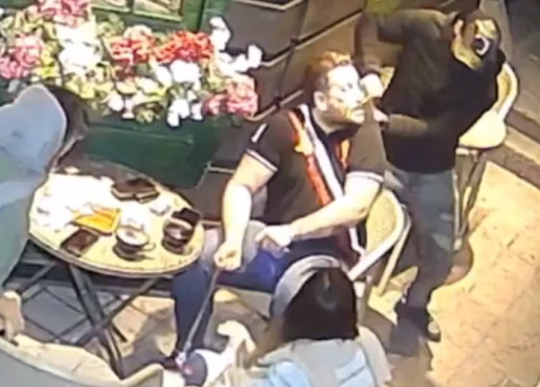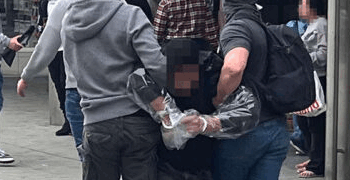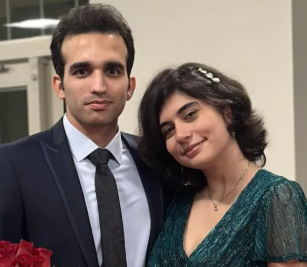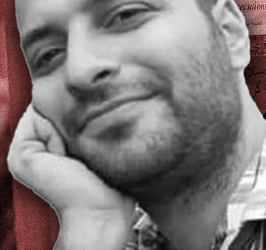Brazen street crimes have become the norm in Tehran, with thieves physically attacking pedestrians, most commonly to grab their cellphones out of their hands as they are chatting.

Others steal handbags from women.
In one case, shown in the accompanying photo from a Saadatabad café’s security camera, a thief grabbed a man’s necklace from behind and ripped it off of him.
This is a vast difference from the classic and costly—but non-violent—crime that characterized thefts decades ago in the capital, when gangs noted when a family left town for a Caspian vacation, drove up in a truck and completely emptied the home of everything.
A lot of the recent thefts seem to be around university dormitories—or perhaps the victims are just louder in complaining when they are students and can slam university administrators for the lack of security.
In one of the latest cases, a female student at Shahid Beheshti University was attacked 50 meters from her dormitory in the capital’s northern Velenjak neighborhood. The robbers broke her teeth and stole her phone.
In the case that has received the most attention because of the violence, 19-year-old Amir-Mohammad Khaleghi, a business student at the University of Tehran, was stabbed to death in February when he resisted robbers near his dormitory.
While cases of robbery at knifepoint draw the most attention and cause the most fear, security camera video suggests that most thefts are minimally violent. The thief comes up behind a pedestrian walking slowly on the sidewalk and chatting on a cellphone. Then the thief simply grabs it out of the victim’s hand and runs off.
Other thieves work in pairs from motorcycles. On April 20, video circulated of a motorcyclist snatching a necklace from a woman carrying a child in southern Tehran, knocking both to the ground.






















